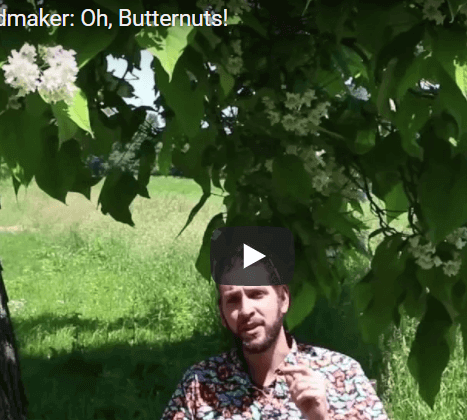In which Ricky the Meadmaker answers questions about over-feeding yeast, making the jump from homebrewer to pro, force carbonation, and creating a sweet, syrupy mead.
Plus, he puts a question to you: How do you add your fruit when you make melomels?
Send your answers and experimental data to meadmaker@groennfell.com!
On Carbonation
Your First Batch of Mead
On Going Pro
Further Viewing:
On Going Pro
TRANSCRIPT
This week on Ask the Meadmaker, I'm drinking a beer because never let it be said that Ricky the Meadmaker isn't ecumenical.
Welcome to Ask the Meadmaker, where I, Ricky the Meadmaker, answer your questions about mead making, mead drinking, mead brewing, and really any question you're willing to send to me.
The first question this week is about force carbonation in mead. People want to make a mead which is sparkling or bubbly or carbonated, and they don't want to have to use the yeast. Basically, they want to know how to push CO2 bubbles into mead. The answer is, the easiest way to do it is in a keg. If you try to force carbonate in bottles, there are these really complicated contraptions that do it. Basically, force carbonation is nothing more complicated than putting your mead in a keg, putting that keg on CO2 at the desired pressure, and waiting.
I've gotten a lot of questions recently about overfeeding, which I initially took as an insult. And then I realized people weren't asking about me, they were talking about yeast nutrient. People want to know, can you overfeed your yeast? The answer is, in one sense, no, put in all the nutrients you want. Your yeast will only uptake so much of that nutrient, however much they need. It's like putting a plate of food in front of a toddler. The toddler will eat until she is full and leave the rest. But here's the problem. You will have nutrients potentially settling out of solution precipitating to the bottom. Then you will have weird sort of zinc metal flavors leftover in your mead.
As many of you know, I consult pro bono with startup meaderies. The reason I do this is because I'd love to see more meaderies in America and around the world. One question I always get from budding professional meadmakers is, is this as big a leap as it seems, going from being a home brewer to being a professional brewer? And the answer is, it's a much larger leap than it seems like.
In addition to being an ecumenical drinker, let it never be said that I am too big to admit my mistakes. I'm just too big to buy clothing at a normal store. Last episode, the tree underneath of which I was seated, was identified as a butternut. It is not a butternut tree. It is in fact a Northern catalpa tree. Thank you, Mark and Agronomist from Iowa for pointing out my mistake.
Sven from Iceland has brewed his first mead. Congratulations. But he has a problem. He started with this massive original gravity and ended up with something very low. It's very high alcohol, but he says it's light and watery and has the mouthfeel of a lager. And he wanted something thick and syrupy. Well, there's an easy solution to this. Sorbate it so it doesn't really ferment and add more honey.
Before I send it over to Ricky with our word of the week, I need your help. I've been getting lots and lots of questions recently about fermenting with fruit, fresh concentrate, juices and dried. People want to know what's the difference between fermenting with the dried fruit and a fresh fruit. And frankly, I don't have time right now to run side by side experiments. But you guys do over the next few months. I would love if you could write to me with your experiments. Do you use a concentrate versus a juice? Do you use fresh and chop it up? Do you use fresh and drop it in whole? How do you ferment with fruit? And in a few months, we'll do a whole episode on the subject.
That's our last question for the week. And it's weird, it's a question for you guys. I just need to send it over to Ricky with our word of the week. Ricky?
Thank you, Ricky, you caught me just in time. I was off for a gentlemanly game of croquet. This week's word is hydrolysis. Hydrolysis is the process of adding water to break apart a compound. When you break apart polysaccharides into sugars by hydrolysis, it's called saccharification. It is an essential component of making mead. When you mix your water and your honey together, there is some level of saccharification and hydrolysis. So, if you want to sound even more pretentious, tell people that you've just hit the hydrolysis point of your brew day.
Hydrolysis. That's our word the week and the end of our show. Give me your questions and I'll get to them as soon as possible. Cheers.




